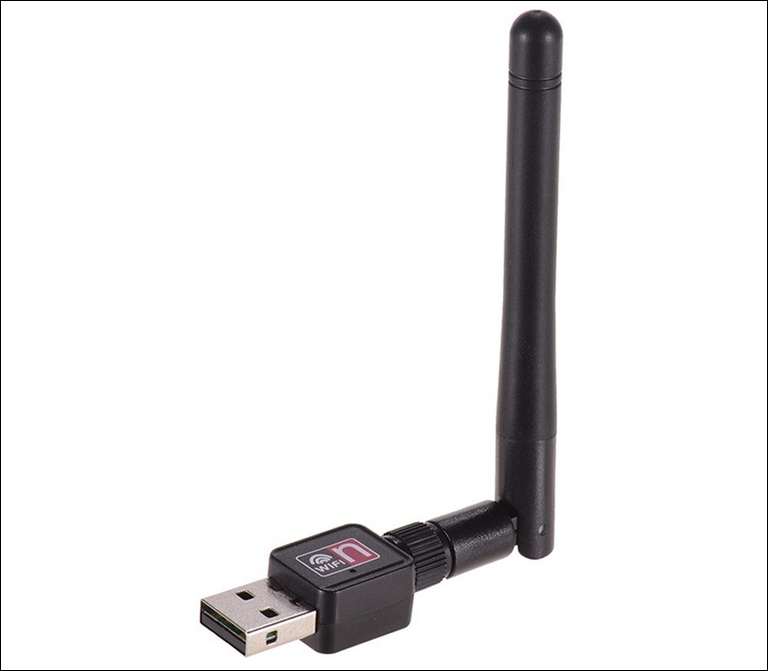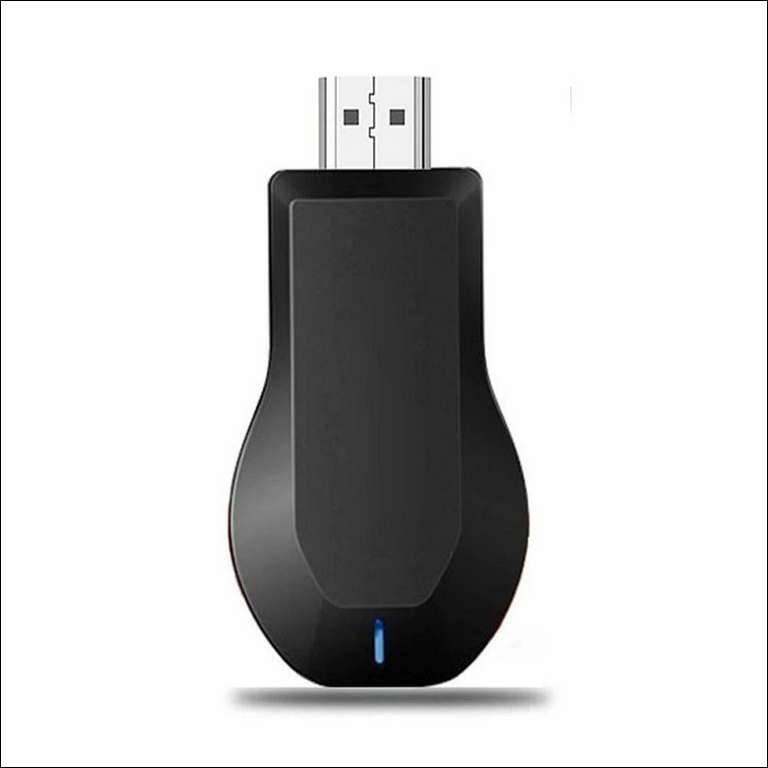How to connect a Wi-Fi adapter to TV: [Tips for choosing one]
All about Wi-Fi adapters for TVs: what they are, whether and how to connect them, set-up instructions, tips for choosing the best adapters.
The Wi-Fi adapter for TV is a very interesting topic, about which there are a lot of rumours and ambiguities on the Internet. No matter how many times we search, there is no normal guide, everywhere not quite true, sometimes even false or very vague explanations. With this article, we would like to dispel the myths surrounding the topic and talk about the real features of such adapters, peculiarities of their connection and selection rules.
What is a Wi-Fi adapter for a TV?
A Wi-Fi adapter, module or dongle is a device that can receive the wireless Internet signal from your router. It resembles a flash drive, sometimes a little larger in size. Very often such devices are installed on desktop computers, most of them are not equipped with built-in modules. Lately, they have often been recommended for TVs and that’s not a bad thing, but unfortunately, they are far from being omnipresent.
What kinds of Wi-Fi adapters for TVs?
There are several main varieties of adapters that you need to pay attention to first. They differ in the type of connection, and a lot depends on that.
The main types of Wi-Fi adapters:

USB. They look like regular USB sticks and they too connect to the USB socket on your TV. It is an alternative to the built-in wireless module. For example, it may have malfunctioned or is simply not present on your television by default.

HDMI is a more functional device. The HDMI connector allows the picture processed inside the same dongle to be displayed on the television screen. So you can quickly output images from your phone or computer to your TV via Wi-Fi.
Can I connect a Wi-Fi adapter to my TV?
It’s important to think about whether you can plug a Wi-Fi adapter into your TV and make it work. And there are a lot of nuances lurking here that you should definitely be aware of.
Important things to know about USB Wi-Fi adapters:
A USB adapter is just an alternative to the built-in module. It does not process the image, it simply is not capable of it due to the low power of the connector and the lack of picture output. It only receives the signal and transmits it to the TV. If the TV knows how to process it, connecting to the Internet will be no problem.
Wi-Fi module with a USB connection will not work on TVs without Smart TV. Why? Very simply, the television is not capable of processing the signal it receives because it has no operating system and no applications capable of doing so. Even firmware is powerless here, because the hardware, too, lacks the necessary power for complex calculations.
Such an adapter can only be used on TVs with Smart TVs. It makes sense to use it, provided that the built-in module has been broken or is not provided from the factory. It is true that modern devices almost always have a wireless adapter installed.
What you need to know about HDMI Wi-Fi adapters:
They can do signal processing and the HDMI connector allows you to output a finished picture as if it came from a set-top box, DVD player etc.
An HDMI connector is obviously required for connection. If this is not available, it is likely that adapters will not work.
An HDMI Wi-Fi adapter requires the signal to be transmitted over a network from another device. It won’t work on its own, as a normal TV is incapable of handling this kind of data in any way. Playback control will be on the other device.
Now to summarise: TVs without Smart TV can only work with HDMI adapters and will only output images from another device in sync. USB Wi-Fi modules are only suitable for Smart TVs and allow you to use the Internet on a smartphone or TV, i.e. with a remote control and to use the traffic in apps. Don’t expect them to do the impossible, a normal USB adapter connected to a simple TV won’t do anything.
How to choose a good Wi-Fi adapter for TV: selection criteria
Having understood the intricacies of both varieties of adapters, it’s time to take a closer look at their characteristics. These, too, you need to pay attention to when choosing a device, so as not to be disappointed in your purchase.
The rules for selection:
- Compatibility with television sets. Ideally, it is better to buy devices from the same manufacturer or products certified by it. Samsung, LG and a number of other companies already have such devices. Another way is to buy universal Wi-Fi modules, but there is a small risk that they will not work. However, they are often priced below the official devices. In any case, you need to look to see that the packaging says that the adapter works with your Philips, Toshiba or other TV. It’s best not to hide the receipt until you’ve checked the device.
- Connection type. This has already been covered quite a bit above.
- Amplification power or radius of coverage. The further away the TV is from the router, the higher it should be. It is desirable that the figure is equal to or more than 17 dBm.
- Frequency. 2.4 GHz is more common and works consistently with all electronics, but has a lower speed. 5 GHz is still a relatively new frequency and is less busy, faster. Here you need to be guided by the capabilities of the router.
- Standard. The Wi-Fi module must support 802.11n or 802.11ac, only their bandwidth is sufficient for high-definition video viewing.
By analyzing the listed parameters, you will be able to determine which Wi-Fi adapters are suitable for the TV and which ones will be unsuitable.
![How to connect a Wi-Fi adapter to TV: [Tips for choosing one]](https://techshali.com/wp-content/uploads/2021/12/connect-wi-fi-adaptor-TV.jpg)
How do I connect a Wi-Fi adapter to my TV?
In general, the connection procedure is straightforward if the conditions are met and the correct device is purchased. If it is a USB module, you need to connect the Wi-Fi adapter to the TV to the appropriate socket, and then under Settings in the Network tab, search for wireless networks. After entering the password to the appropriate network, everything will work.
In the case of an HDMI Wi-Fi adapter, the procedure is slightly different. Of course, the device needs to be plugged into the appropriate slot on the TV, but a little adjustment is also required. There are several options.
Firstly, it is possible to use the picture broadcasting function, such a function can be in the notification curtain. Secondly, you can set up a Wi-Fi Direct connection. You need to open “Settings” -> “Network” -> “Wireless networks” and go to the section “Advanced”. There, on the corresponding Direct page, you should see the name of the Wi-Fi dongle. All that’s left to do is connect to it and you’re all set.
Most common connection problems and how to fix them
When setting up a Wi-Fi module connection, you may have encountered some difficulties. Here are the main problems and solutions:
- The TV doesn’t see the adapter. Most likely the problem is with the HDMI device, you need to change the source.
- The TV is not able to search for Wi-Fi. Most often it is about TV sets without Smart TV, and they do not support such receivers.
- Cannot connect to the network. It’s worth trying to manually specify the connection parameters: IP address, subnet mask, gateway, DNS server.
- Poor connection quality. The problem is either a bad signal or a low-quality receiving/transmitting device.
Wi-Fi adapters are really useful devices, but when used correctly. If you need to connect an old TV without Smart, simply use a set-top box. It should already have the module by default.